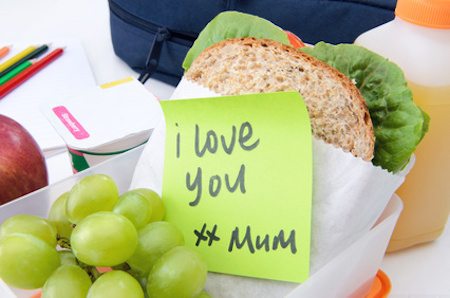It’s 9:30 pm. The dishes from dinner are done, the kids are finally in bed and you are exhausted. And then you realize you have to pack tomorrow’s lunches. You debate whether you should tough it out and pack it tonight or get up even earlier the next morning. Oh life!
We’ve all been in the have-to-pack-a-lunch zone, whether it’s for ourselves or our families. Making healthy, appealing lunches sure can be tricky, especially if your little one has food restrictions. This week, our goal is to make life a little easier for you moms and dads dealing with this! Our team has collected our favourite tips and tricks for packing lunches for children with allergies, intolerances and/or digestive issues. We hope you find this article helpful!
Top Tips to Pack Lunch for Allergies and Intolerances
1. Plan ahead and write a list
This seems very basic but it really will make your life simpler! On the weekend, take some time to think about what your child likes and dislikes. What has been a hit before? What has come back home in the lunch box untouched? Create a list or menu plan of what you will send for lunch over the course of the week. Creating a plan will make grocery shopping faster and easier, and will reduce overall food waste (and save you money!) Your plan may look something like this:
| Monday | Tuesday | Wednesday | Thursday | Friday |
| Snack: Banana with sunflower seed butterLunch: Lactose-free yogurt parfait with berries and gluten-free granola | Snack: Carrots and low FODMAP dip with grapesLunch: Homemade healthy “Lunchables” (gluten-free crackers, cheddar cheese and sliced turkey) | Snack: Baked pita chips (using Udi’s tortillas) with homemade hummus (or store bought without garlic/onions if child can tolerate tahini)Lunch: Low FODMAP fruit salad with leftover harvest vegetable soup | Snack: Carrots with hummus and bananaLunch: Chicken and veggie wrap (Udi’s tortillas) | Snack: ½ cup Low FODMAP fruit salad (cantaloupe, pineapple, strawberries) with lactose-free yogurtLunch: Sunflower seed butter and strawberry jam on gluten-free whole grain bread with veggies and low FODMAP dip |
TIP: Need more allergy and digestive friendly snack ideas? Our team reviewed several products that can help you cut time when shopping for school snacks!
2. Be on the lookout for hidden ingredients
If you don’t already have the Monash University Low FODMAP app, consider downloading it onto your phone. The app is constantly being updated by Monash as new foods are tested, and can help take the guesswork out of grocery shopping for digestive-friendly foods. Be cautious when examining ingredient lists because FODMAPs can be lurking in unsuspecting places. For example, “seasoning” could contain onion/garlic powder or “caramel colour” could contain lactose.
3. Be creative
As a parent of a child with IBS, I’m sure you have already had to get creative by tweaking recipes to make them suitable for your child to eat. If you feel like you are lacking inspiration, take a look around my Pinterest account. I’ve created several boards with allergen and digestive-friendly recipes and products for you to access in one place. I have noticed that children love visually appealing food. Pack foods with lots of colour or use stencils to create cool shapes. Additionally, you could opt to create their lunch around a theme like a holiday or movie!
4. Make extra dinner for leftovers
An oldie but a goodie. You know I love leftovers! If you know your child likes a particular dinner item, make extra and pack it for lunch the next day. This strategy will save you a considerable amount of time on those nights that seem extra busy. Salads are a great meal for both dinner and lunch – have you tried our Easy Roasted Vegetable Pasta recipe yet? Good warm or cold 😉 For more strategies on how to use leftovers, read Time to Eat Those Leftovers!
5. Don’t get discouraged
It’s almost certain that every lunch won’t be a hit. Children are notoriously fickle. One day they love sandwiches, the next they hate them. If your child’s lunch box comes back barely touched, talk to them about it. Use open ended questions to understand why they didn’t eat it. It could simply be that they don’t like it; however, it could also be that they don’t have easy access to a microwave, the line to heat up food is always too long or perhaps they didn’t like one ingredient and decided not to eat the whole thing. If they are a picky eater, get them involved in choosing recipes, cooking food and packing their lunches. Kids are much more likely to eat foods that they have helped prepare. As an added bonus, it will help them develop food skills early on, setting them up for success in adulthood!
6. Get others involved
If your child suffers from food allergies or intolerances, schedule a meeting to talk to their teacher, principle or educational assistant (if applicable). It is important to make sure they are aware of food sensitivities and know how to respond if an issue were to arise. If your child uses an Epipen, ensure the teacher knows where to find it and is comfortable using it if your child has an allergic reaction. Create a protocol for the teacher to follow if your child has IBS or food intolerance related symptoms. Collaborating with your child’s educators and having a plan will help improve your peace of mind when you cannot be there!
The first step if you’re looking to improve irritable bowel syndrome (IBS) or another digestive disorder or disease, is to understand more about the Low FODMAP diet and if it can help. Download my free eBook to help you better understand this diet and get started implementing simple steps to get rid of symptoms like gas, bloating, pain, diarrhea or constipation related to IBS. Click here to get a copy emailed to you right away.
Well there you have it! We hope these tips will be helpful for you and your family. If you are looking for some easy, kid-approved recipes that are suitable for children with allergies or IBS, we are sharing some delicious snack and entrees recipes next week!
Much love & good eating,
Stephanie and the Team


